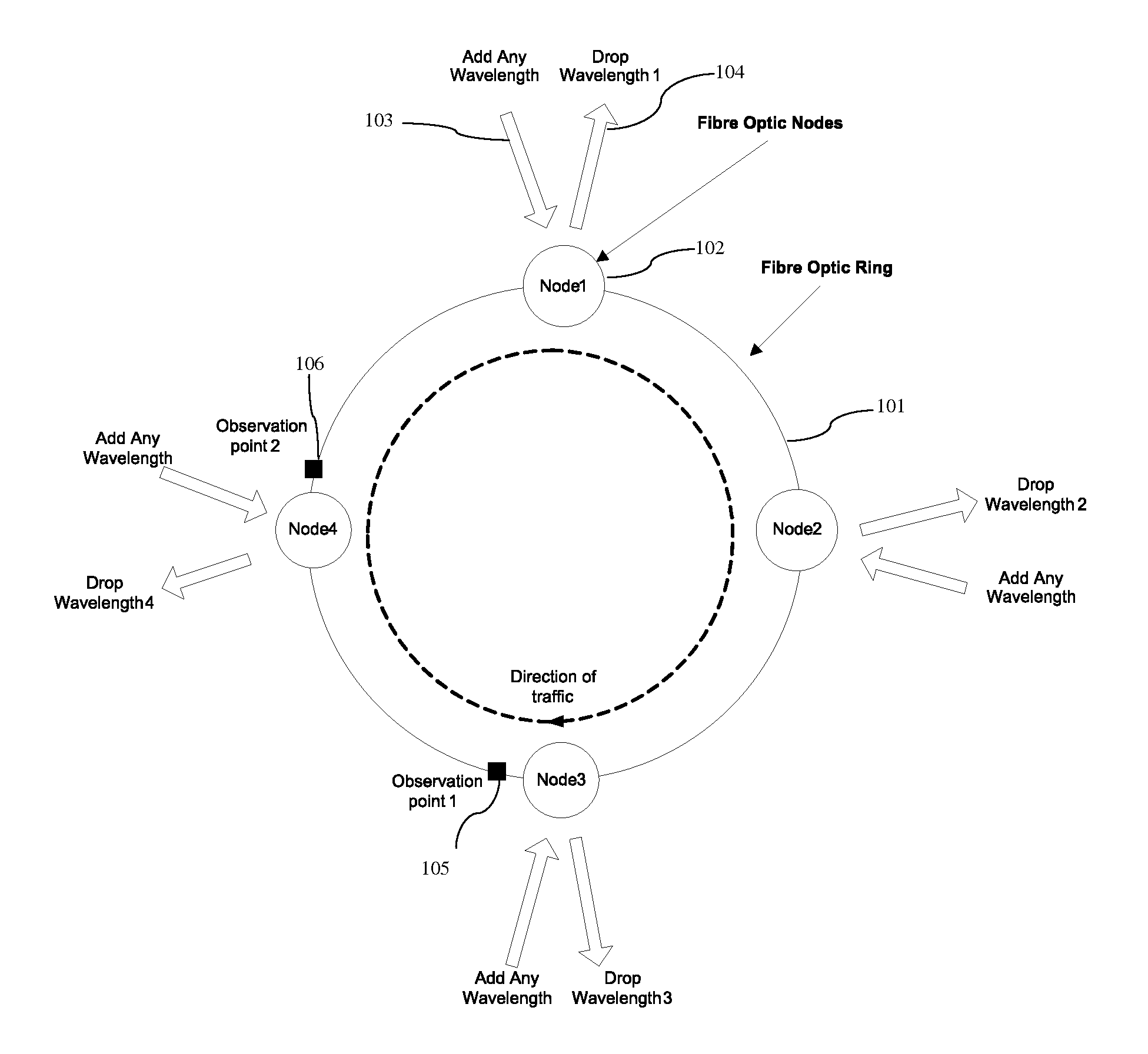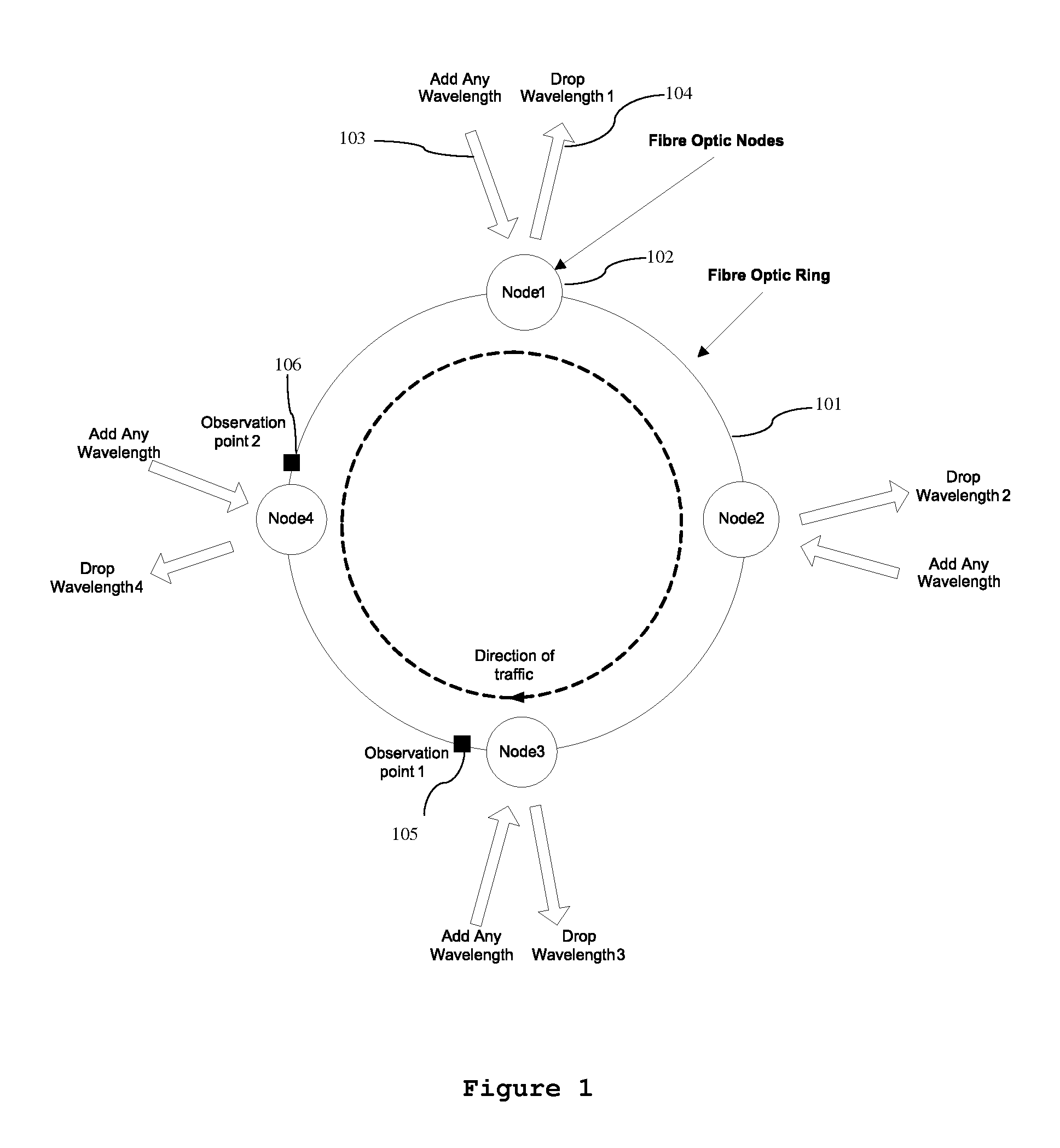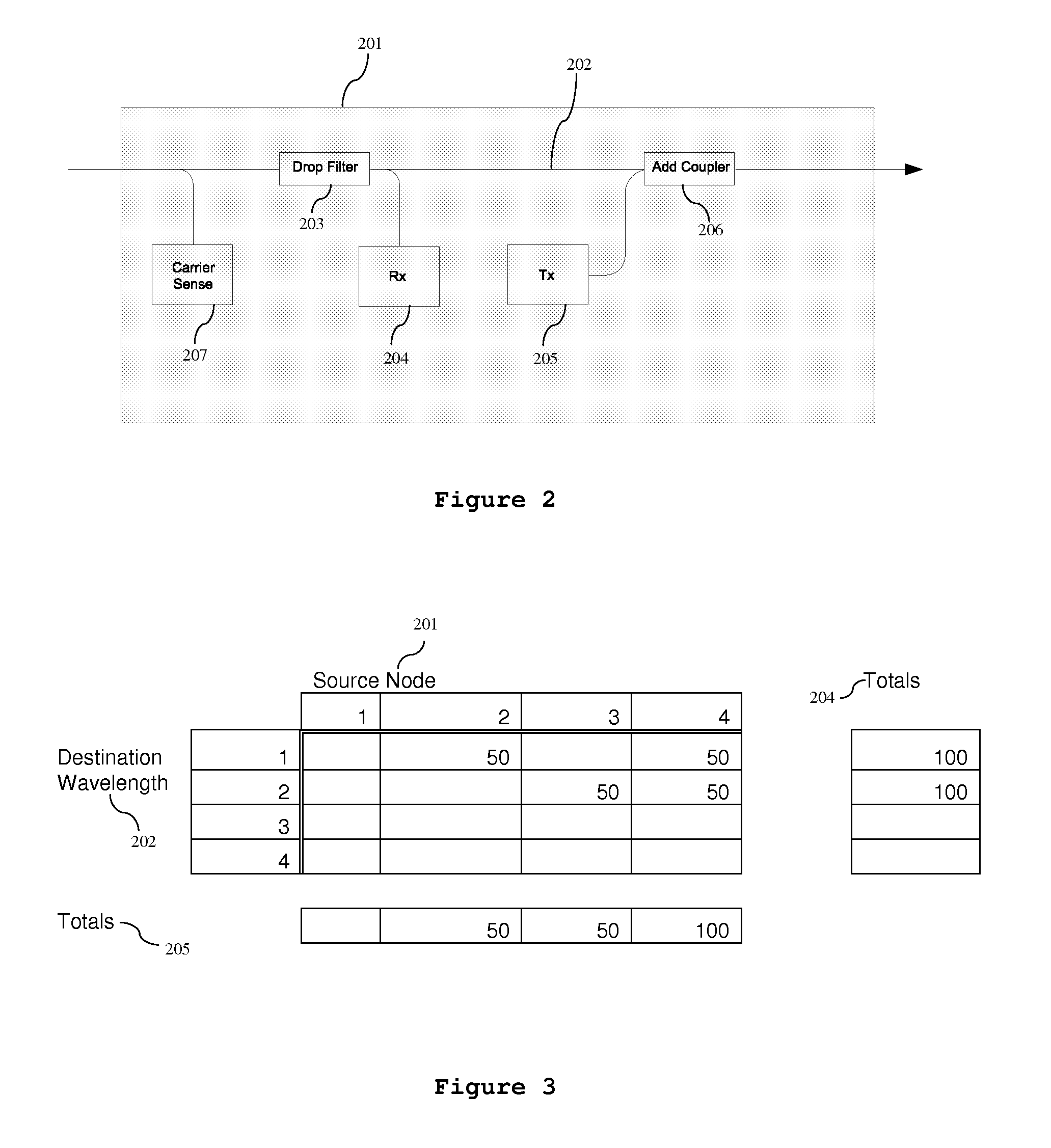Random gap insertion in an optical ring network
a random gap and optical ring technology, applied in the field of telecommunications networks, can solve the problems of inability to detect the gap, the gap is not fixed, etc., and achieves the effect of avoiding the gap from being damaged
- Summary
- Abstract
- Description
- Claims
- Application Information
AI Technical Summary
Benefits of technology
Problems solved by technology
Method used
Image
Examples
Embodiment Construction
[0059]FIG. 6 shows the primary aspect of the invention for the same scenario as the previous example. In this case the decision to transmit at all nodes is randomised, so that for periods an upstream node is not allowed to transmit even if it has traffic to send, it has an allocation and the wavelength is free. This has the effect of splitting out the large bursts shown in FIG. 5 into multiple smaller bursts and similarly for node 3. The probability that bursts align is smaller and Node 4 can now fill in the gaps and can achieve more than 50% throughput.
[0060]The invention is used at each source to control the insertion and size of gaps for a wavelength by terminating bursts and preventing further transmission at the same wavelength for a determined time. The invention, therefore, controls the size of all bursts and the size of all gaps for all wavelengths at each source node. For the example allocations shown in FIG. 3, the worst case access received by Node 4 is 50%, as shown in F...
PUM
 Login to View More
Login to View More Abstract
Description
Claims
Application Information
 Login to View More
Login to View More - R&D
- Intellectual Property
- Life Sciences
- Materials
- Tech Scout
- Unparalleled Data Quality
- Higher Quality Content
- 60% Fewer Hallucinations
Browse by: Latest US Patents, China's latest patents, Technical Efficacy Thesaurus, Application Domain, Technology Topic, Popular Technical Reports.
© 2025 PatSnap. All rights reserved.Legal|Privacy policy|Modern Slavery Act Transparency Statement|Sitemap|About US| Contact US: help@patsnap.com



